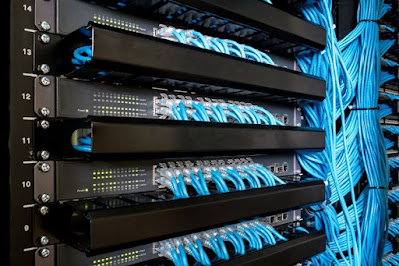Gaining Energy Efficiency through Network Structured Cabling Services
In today's business landscape, energy efficiency has become crucial for organizations striving to reduce their carbon footprint and operational costs. One aspect that often goes overlooked is the role of network structured cabling in achieving this goal. This blog explores how professional network structured cabling services can contribute to enhanced energy efficiency in business operations.
Understanding Network Structured Cabling
Network structured cabling refers to the comprehensive system of cables, connectors, and related hardware that provides the backbone for data and communication networks within a building or facility. This system encompasses various types of cables, such as Cat5e, Cat6, and fiber optic, each with its own energy implications.
The choice of cabling and its proper installation can significantly impact energy consumption. For instance, fiber optic cables have lower power requirements compared to copper cables, making them a more energy-efficient option for long-distance data transmission.
Effective network-structured cabling systems are crucial in reducing energy consumption within data centers and IT infrastructure. One of the primary ways it achieves this is by improving airflow. Poorly managed cables can obstruct airflow, leading to increased cooling requirements and higher energy usage.
Furthermore, well-designed cabling systems minimize power loss through efficient cable routing and the use of high-quality, low-resistance materials. This translates into reduced energy consumption and lower operating costs for businesses.
Optimizing Space and Cooling
Proper cable management is essential for optimizing space utilization and improving cooling efficiency in data centers. Professional network structured cabling services ensure that cables are neatly organized and routed, reducing clutter and allowing for efficient airflow.
By minimizing heat generation through optimized cable layouts, businesses can lower their cooling requirements, resulting in significant energy savings. Additionally, efficient cooling systems can extend the lifespan of IT equipment, further contributing to overall cost savings and sustainability.
Long-Term Benefits of Efficient Cabling
Well-planned and professionally installed network structured cabling systems offer durability and scalability, providing long-term benefits for businesses. These systems are designed to accommodate future growth and changes in technology, reducing the need for frequent upgrades or replacements.
By investing in efficient cabling solutions from the outset, businesses can minimize material waste and the associated energy consumption required for manufacturing and installation processes. Furthermore, a robust cabling infrastructure can support energy-efficient technologies, such as Power over Ethernet (PoE), which eliminates the need for separate power sources and reduces overall energy consumption.
Conclusion
In the pursuit of energy efficiency and sustainable business practices, network-structured cabling services play a vital role. By ensuring optimized cable layouts, improved airflow, reduced power loss, and efficient cooling, businesses can significantly reduce their energy consumption and associated costs.
Moreover, professionally installed structured cabling systems offer long-term benefits, including durability, scalability, and compatibility with energy-efficient technologies, further contributing to a sustainable and cost-effective IT infrastructure.
.png)


Comments
Post a Comment